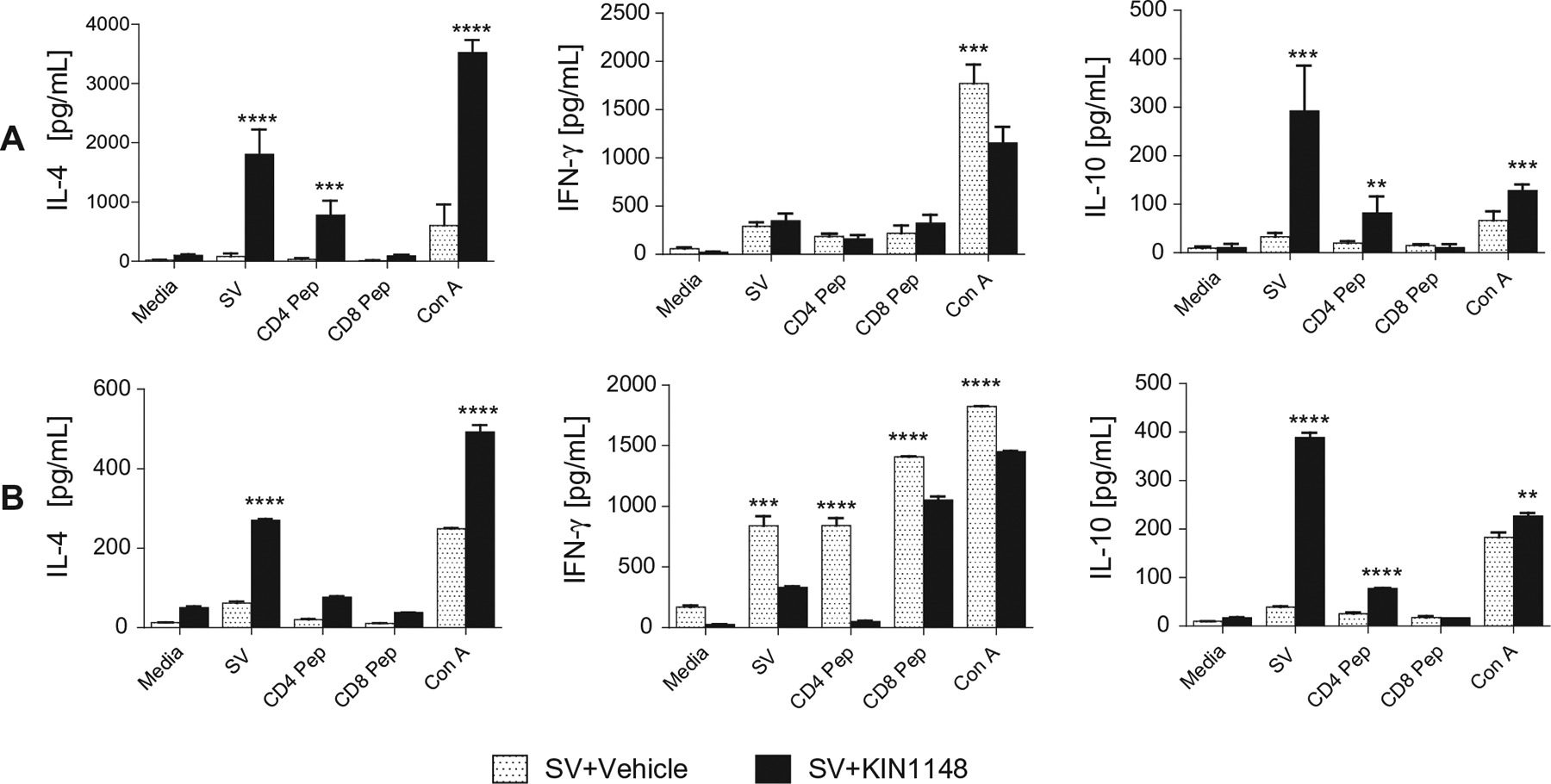Fig. 3.

Prime-boost immunization with vaccine plus KIN1148 enhances influenza virus-specific Th2 and immunoregulatory responses in response to viral challenge. Groups of C57BL/6N mice were immunized twice, 21 days apart, with vaccine plus vehicle (n = 4), or vaccine plus KIN1148 (n = 8). Mice were then challenged with 10× the LD50 of mouse-adapted influenza virus A/California/04/2009 21 days after boost. T cells from lung and lung-draining lymph nodes (collected on day 7 after challenge) were stimulated for 18 h with split vaccine (SV), CD4 epitope peptide MA-CA/04 NP260–283 (CD4 Pep), CD8 epitope peptide MA-CA/04 NP366–374 (CD8 Pep), or concanavalin A (Con A). Cytokines in culture supernatants were then measured using a multiplex ELISA. (A) T cells derived from lungs were evaluated from individual mice. Bars represent the mean and SEM of KIN1148/vaccine (n = 8 mice) and vehicle/vaccine (n = 4 mice) groups. (B) Cells derived from lung-draining lymph nodes were evaluated as separate pools derived from mice receiving KIN1148/vaccine (n = 8 mice) or vehicle/vaccine (n = 4 mice). Stimulations were performed in triplicate with bars representing the mean and STD. Student’s two-tailed t-test was performed to compare the respective antigen-specific T cell responses from SV/vehicle control and SV/KIN1148 groups. **P < 0.01, ***P < 0.001, ****P < 0.0001.
